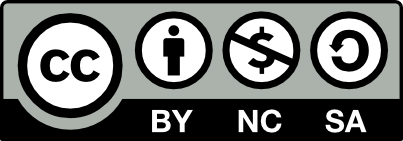Other malignant epithelial neoplasms and malignant melanomas
Classification according to ICCC: XI.
Rare cancers in children and adolescents: Definition
All malignant tumours in children and adolescents are classified as rare diseases (defined by an incidence lower than 5 cases per 100,000 children), and therefore rare solid tumours in children and adolescents are rather difficult to define. For this reason, the North American Children’s Oncology Group (COG) and the Italian Tumori Rari in Età Pediatrica (TREP, Rare Tumours in Paediatric Age) not only define rare cancers in children numerically (incidence rates lower than 2 cases per 1 million children): in the context of the paediatric and adolescent population, rare cancers are often classified as epithelial tumours (group XI according to the ICCC classification), which typically develop in adults. These tumours have extremely low incidence rates in children under the age of five; approximately 75% of these cancers are diagnosed in adolescents (aged 15–19).
As regards the correct and efficient treatment strategy, the attending physician and the patient’s family have often very difficult decisions to make, because optimal treatment procedures are not clearly defined due to a rare occurrence of these tumours in the paediatric population.
Very rare solid tumours in children can be classified into several groups by different criteria:
A. Classification according to the age:
- Cancers typically found in adults – mostly carcinomas in various locations. Carcinomas account for less than 2% of all solid tumours in children under the age of 15, and less than 10% of all solid tumours in adolescents under the age of 20. Among the young generation, the most common carcinomas involve the hepatocellular carcinoma, thyroid carcinoma, adrenocortical carcinoma, and kidney carcinoma. Bowel carcinoma in adolescents usually develops as a result of genetic burden.
- Cancers typically found in children – very rare cancers typically occuring in children under the age of five (pancreatoblastoma, malignant rhabdoid tumour, or pleuropulmonary blastoma).
B. Classification according to the anatomic location and the organ of origin:
- Rare cancers of head and neck
- Rare chest cancers
- Rare abdominal cancers
- Rare pelvic cancers
- Rare skin cancers
- Malignant melanoma
Literature
- Pappo, A.S., Rodriguez-Galindo, C., Furman, W.L.: Management of infrequent cancer of childhood. In: Pizzo, P.A., Poplack, D.G. (eds): Principles and practice of pediatric oncology (6th ed). Philadelphia: Lippincott 2011. pp. 1098–1123.
- Pappo, A.S., Krailo, M., Chen, Z., Rodriguez-Galindo, C., Reaman, G.: Infrequent tumor initiative of the Children's Oncology Group: initial lessons learned and their impact on future plans. Journal of Clinical Oncology 2010; 28(33): 5011–5016.
- Ferrari, A., Bisogno, G., De Salvo, G.L., Indolfi, P., Perilongo, G., Cecchetto, G.: The challenge of very rare tumours in childhood: the Italian TREP project. European Journal of Cancer 2007; 43(4): 654–659.
- Bajčiová, V.: Vzácné nádory u dětí a adolescentů. In: Kubáčková, K. a kol.: Vzácná onemocnění v kostce, Mladá fronta 2014. pp. 107–124. ISBN 978-80-204-3149-3.
This chapter was authored by:
Viera Bajčiová, M.D., Ph.D.
Department of Paediatric Oncology
University Hospital Brno




